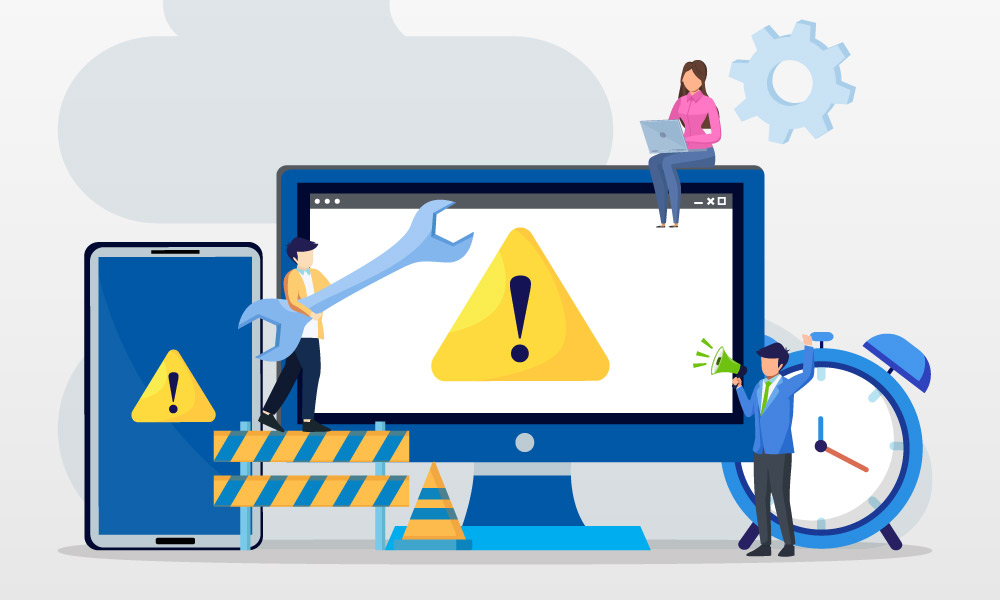How B2B Lead Generation Websites Drive Business Growth
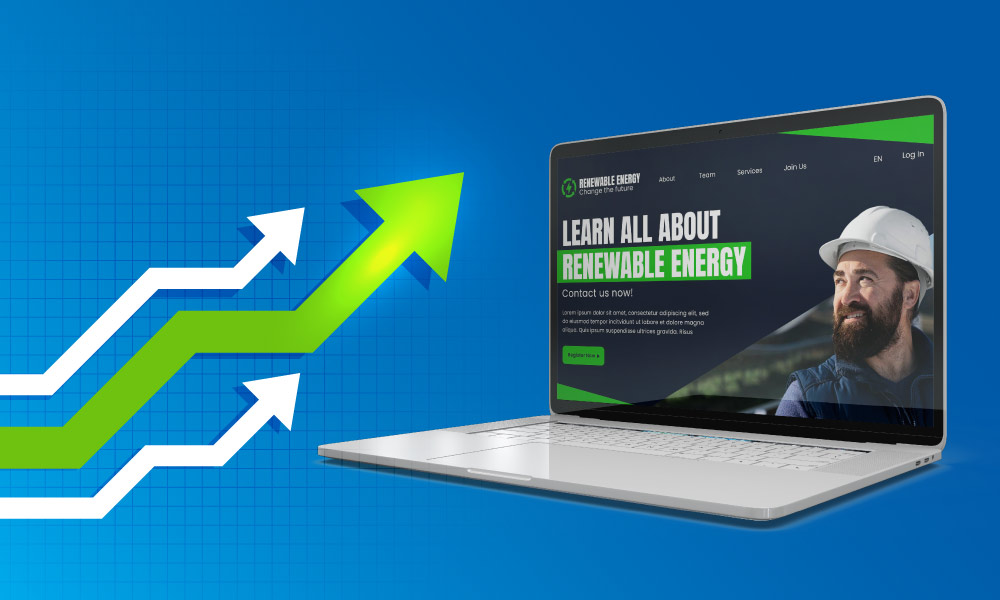
Is your website driving growth, or is it simply taking up online space? A well-designed B2B lead generation website is a great way to transform passive website visitors into active, valuable leads.
By integrating marketing strategies and a targeted lead generation campaign, your site can do more than just attract traffic—it can nurture and convert visitors into ready-to-buy prospects.
With seamless CRM, email, and automation tools, B2B lead generation websites can capture interest and fuel real business growth.
Is your website ready to make that impact?
Key Takeaways:
What are B2B Lead Generation Companies
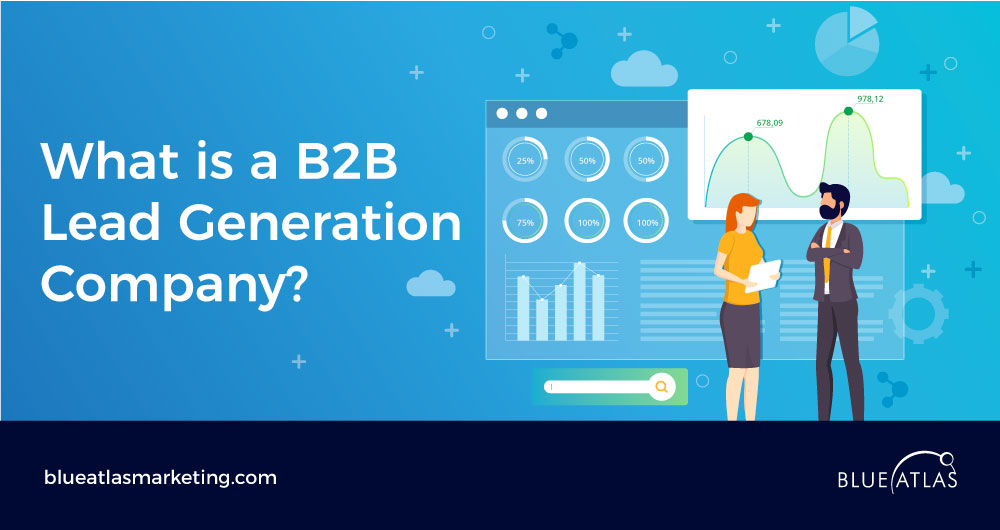
B2B lead generation companies act as specialized partners, connecting businesses with their ideal customers by turning interest into actionable leads.
Think of them as intermediaries, bridging the gap between businesses and clients.
Their role is critical in today’s digital sales environment, where finding and qualifying leads require targeted expertise.
By handling the complex and time-consuming tasks of identifying and nurturing leads, these companies allow internal sales teams to focus on closing deals.
These companies excel at pinpointing, attracting, and qualifying potential customers, using sophisticated strategies and tech tools to connect with leads at the right moment.
They might, for instance, leverage intent data to identify businesses actively searching for solutions in real time or use predictive analytics to determine which prospects are most likely to convert.
Companies like Blue Atlas Marketing go beyond basic lead lists, delivering pre-qualified leads that match specific buyer profiles while enabling precise targeting based on industry, role, and engagement.
By filling the sales pipeline with high-quality leads, B2B lead generation companies drive continuous growth.
They’re more than just connectors; they’re the gatekeepers of effective, scalable business relationships that ultimately enhance revenue and maximize sales team productivity.
Benefits of Lead Generation Services
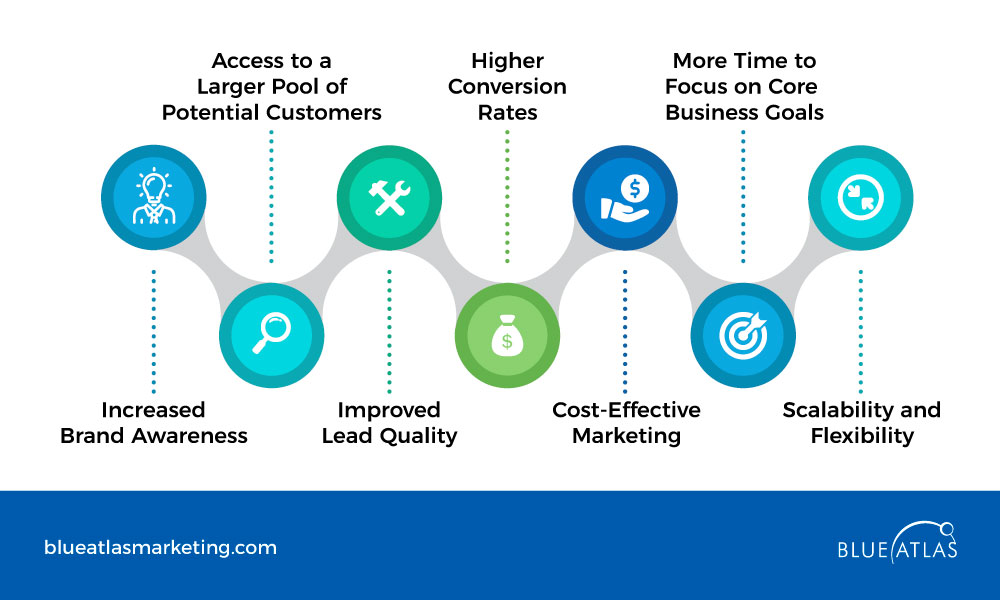
B2B lead generation services offer a range of advantages that can accelerate business growth and streamline the path to more sales.
Here’s a breakdown of the top benefits that make these services essential for competitive businesses:
(a) Increased Brand Awareness – lead generation services boost your brand’s visibility, ensuring it reaches new audiences and stays top-of-mind in your industry,
(b) Access to a Larger Pool of Potential Customers – with specialized tools and strategies, lead generation providers widen your reach, connecting you with a broader, more diverse audience,
(c) Improved Lead Quality – lead generation companies focus on quality over quantity, delivering leads that align well with your target market and are primed for conversion,
(d) Higher Conversion Rates – better lead quality leads to higher conversion rates, so your sales team can focus their efforts on opportunities most likely to close,
(e) Cost-Effective Marketing – by targeting only the most relevant leads, these services optimize marketing budgets and reduce wasteful spending,
(f) More Time to Focus on Core Business Goals – outsourcing lead generation frees up internal resources, allowing teams to concentrate on what they do best,
(g) Scalability and Flexibility – lead generation services are adaptable to your growth needs, making it easier to scale operations without overextending resources.
Top 20 B2B Lead Generation Companies
Choosing the right lead generation partner can substantially impact your marketing and sales outcomes.
Here are 20 standout B2B lead generation companies, each bringing unique features, pricing models, and service types tailored to help businesses connect with qualified leads:
| Company | Feature | Pricing | Type of Services |
| Operatix | Sales acceleration for tech companies | Custom pricing | Lead generation and sales outsourcing |
| Blue Atlas Marketing | Web design with integrated lead gen strategies | Custom pricing | Web development and B2B lead generation |
| Cognism | Data-driven lead sourcing | Custom pricing | Lead generation and data enrichment |
| Overdrive Interactive | Full-service marketing agency | Custom pricing | Digital marketing and lead gen |
| Lusha | Contact and company data solutions | Tier 1:Fractional – $3,600 – $10,000/month; Full-Time – $8,700 – $15,000/month; Enterprise – $10,000 – $50,000/monthTier 2 – $7,250/month + sales commission Tier 3 – $9,000/month + sales commission | B2B lead data platform |
| DiscoverOrg | Comprehensive sales and marketing data | Request pricing | Data management and lead generation |
| UpCall | Live call support for lead qualification | Custom quote | Lead qualification and appointment-setting |
| GetRev AI | AI-powered lead data insights | Talk to Sales Team | Predictive analytics and lead gen |
| Intelligent Demand | Full-funnel digital marketing | Custom pricing | Demand gen and content marketing |
| N3 (Accenture) | Strategic outsourcing for lead gen | Contact for Custom Quote | Sales and demand generation |
| ZoomInfo | Business contact and data intelligence | Custom pricing | Data solutions and lead generation |
| Pearl Lemon Leads | Email and LinkedIn outreach | Custom quote | Outbound lead generation |
| Lead Genius | Targeted lead and market data | Contact Sales Team | Lead data and enrichment services |
| Martal Group | Lead gen for SaaS companies | Tier 1:Fractional – $3,600 – $10,000/month; Full-Time – $8,700 – $15,000/month; Enterprise – $10,000 – $50,000/monthTier 2 – $7,250/month + sales commission Tier 3 – $9,000/month + sales commission | Outsourced sales and lead generation |
| Rocket Reach | Contact discovery and verification | Essential – $468/yearPro – $1,188/yearUltimate – $2,988/year | Data solutions and contact information |
| LinkedIn Sales Navigator | Targeted lead prospecting on LinkedIn | Sales Navigator Core (Professional): $99/month. Sales Navigator Advanced (Team): $169.99/month. Sales Navigator Advanced Plus (Enterprise): starts at $1600/year | Social media prospecting |
| CIENCE Technologies | Data-driven outbound lead gen | Custom quote | Lead research and outbound marketing |
| Belkins | Custom lead gen campaigns | Custom quote | Lead gen and sales outsourcing |
| Salespanel | Real-time lead tracking | Starts at $99/monthCustom pricing | Lead tracking and analytics |
| DealFront | European-focused lead generation | Request pricing | Data solutions and lead sourcing |
How to Choose a Lead Generation Company
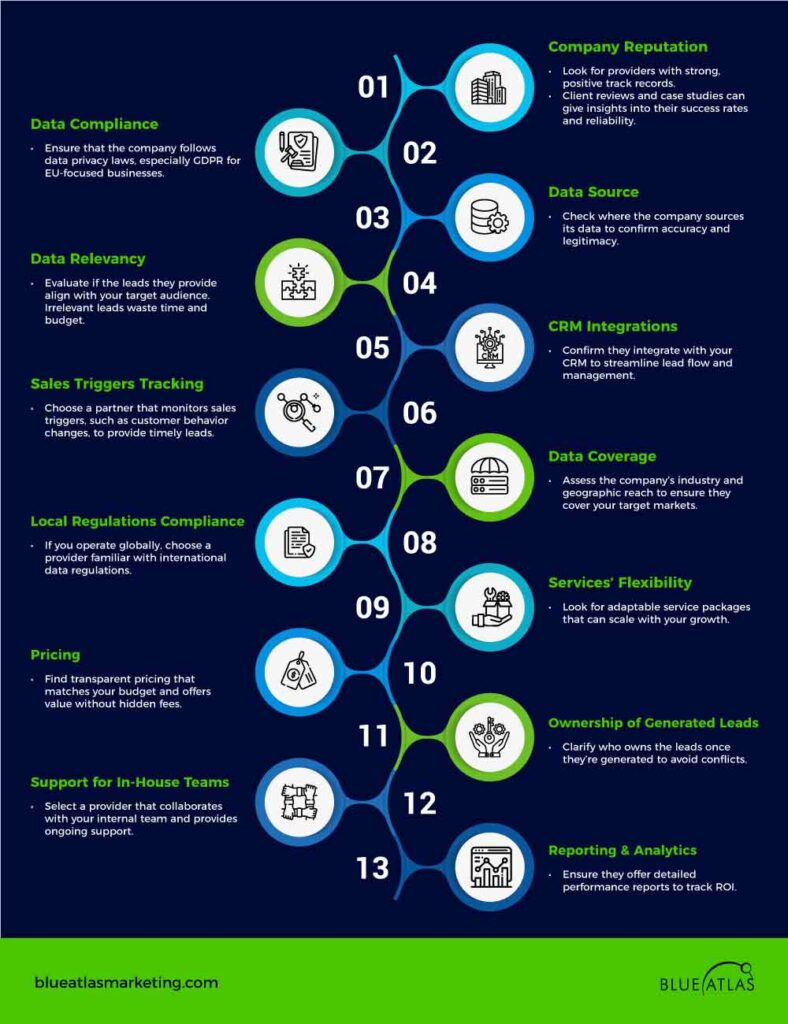
Selecting a B2B lead generation partner is a strategic decision that can impact your sales outcomes significantly.
Here’s a checklist that helps you review the company—making the right choice:
Company Reputation
- Look for providers with strong, positive track records.
- Client reviews and case studies can give insights into their success rates and reliability.
Data Compliance
- Ensure that the company follows data privacy laws, especially GDPR for EU-focused businesses.
Data Source
- Check where the company sources its data to confirm accuracy and legitimacy.
Data Relevancy
- Evaluate if the leads they provide align with your target audience. Irrelevant leads waste time and budget.
CRM Integrations
- Confirm they integrate with your CRM to streamline lead flow and management.
Sales Trigger Tracking
- Choose a partner that monitors sales triggers, such as customer behavior changes, to provide timely leads.
Data Coverage
- Assess the company’s industry and geographic reach to ensure they cover your target markets.
Local Regulations Compliance
- If you operate globally, choose a provider familiar with international data regulations.
Services’ Flexibility
- Look for adaptable service packages that can scale with your growth.
Pricing
- Find transparent pricing that matches your budget and offers value without hidden fees.
Ownership of Generated Leads
- Clarify who owns the leads once they’re generated to avoid conflicts.
Support for In-House Teams
- Select a provider that collaborates with your internal team and provides ongoing support.
Reporting & Analytics
- Ensure they offer detailed performance reports to track ROI.
Strategies to Increase Website Conversion Rate
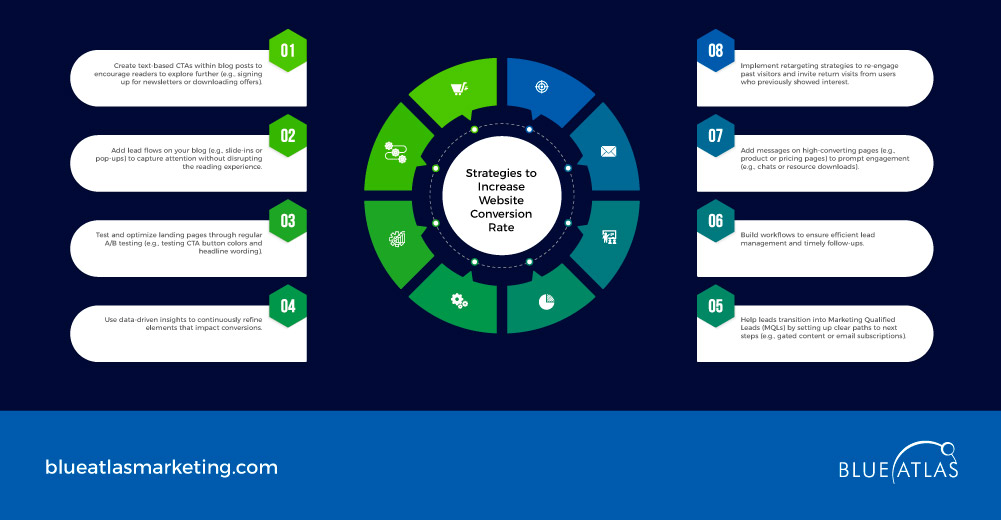
Improving the conversion rate of a lead generation website is essential for turning visitors into valuable leads.
With the right strategies, your website can drive engagement and motivate users to take action.
One powerful approach is to create text-based CTAs within blog posts.
These are subtle yet effective ways to encourage readers to explore further, whether by signing up for a newsletter or downloading an offer.
Complementing this, adding lead flows on your blog—such as slide-ins or pop-ups—captures attention without disrupting the reading experience, making it easier for visitors to connect with your business.
Another essential step is to test and optimize your landing pages.
Regular A/B testing can reveal what resonates best with visitors, from CTA button colors to headline wording.
This data-driven approach allows for continuous refinement of elements that impact conversions.
To further nurture interest, help leads transition into Marketing Qualified Leads (MQLs) by setting up clear paths to the next steps, like gated content or email subscription options that cater to different stages of the buyer’s journey.
Building workflows to enable your team ensures that every lead is managed efficiently, keeping follow-ups timely and relevant.
Additionally, adding messages on high-converting pages like product pages or pricing sections can prompt visitors to engage in a chat or download a resource.
To re-engage past visitors, retargeting strategies can keep your brand top-of-mind, inviting return visits from users who previously showed interest.
Creating Your Ideal B2B Lead Generation Websites
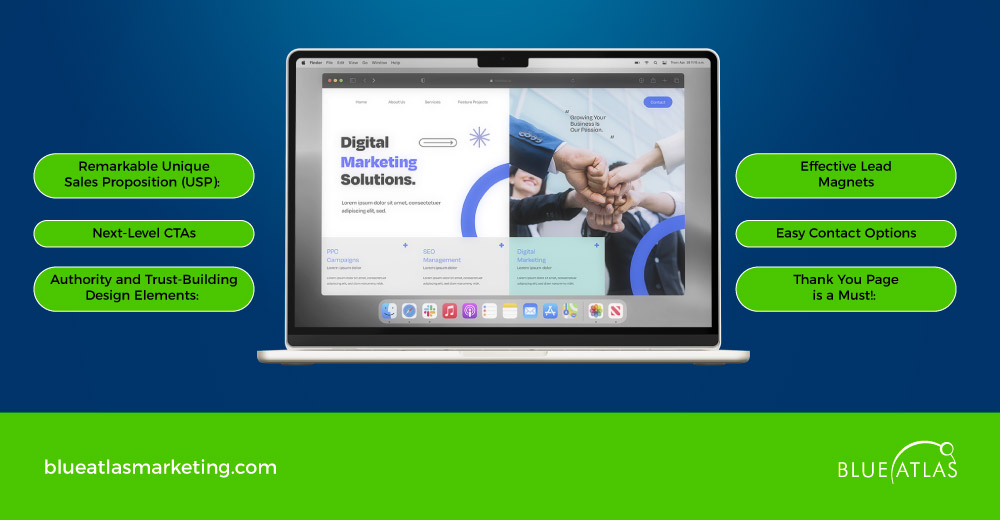
Creating a lead generation website that captures and converts visitors requires a carefully curated set of elements designed to guide users seamlessly from interest to action.
Here are the focuses for a successful lead gen site:
Remarkable Unique Sales Proposition (USP): Your USP should be front and center, clearly communicating what sets your business apart and why visitors should choose you. A compelling USP establishes immediate interest and draws users deeper into the site.
Next-Level CTAs: Calls-to-action (CTAs) are the gateways to conversions. Ensure they stand out visually, are strategically placed, and speak directly to the visitor’s needs, prompting them to take the next step.
Authority and Trust-Building Design Elements: Building trust is key. Use testimonials, case studies, and client logos to create credibility, as well as security badges and certifications where applicable.
Effective Lead Magnets: Entice visitors to share their contact information by offering valuable resources like e-books, whitepapers, or exclusive access to content. Lead magnets should address visitor pain points and provide immediate value.
Easy Contact Options: Make it effortless for visitors to reach out. Simple contact forms, live chat options, and displayed phone numbers ensure potential leads can quickly get in touch.
Thank You Page is a Must!: After a form submission, redirect users to a thank-you page. Not only does it confirm their action, but it’s also an opportunity to offer additional resources or next steps, enhancing the user experience.
How Do Lead Generation Companies Ensure the Quality of Leads?
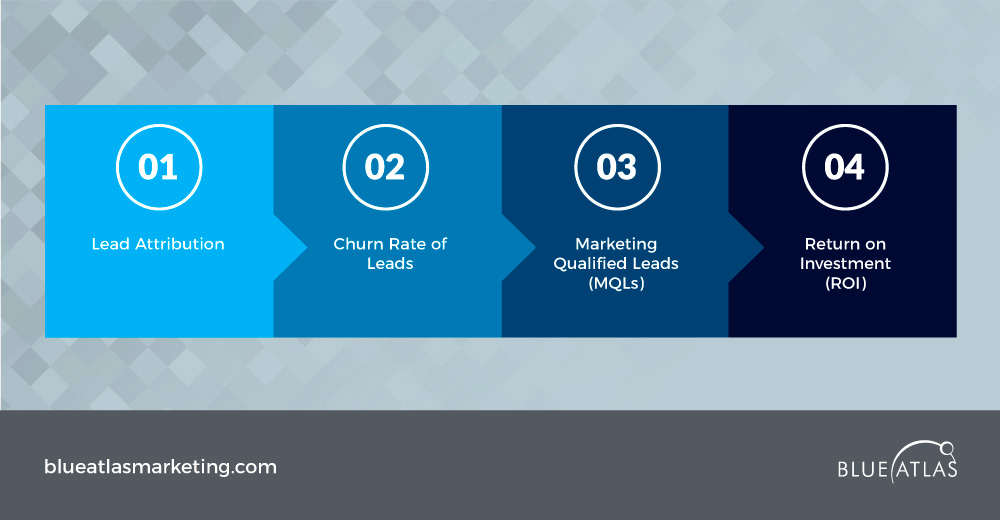
The success of lead generation depends not just on volume but on the quality of leads.
Lead generation companies use specific processes and metrics to ensure each lead aligns with a business’s target audience and is primed for conversion.
One key metric is Lead Attribution, which traces where leads originate and identifies the channels most likely to deliver high-value prospects.
Another is the Churn Rate of Leads, a critical measure indicating how quickly leads disengage, which helps companies refine their targeting strategies.
Additionally, they distinguish between Marketing Qualified Leads (MQLs)—those who’ve shown interest through actions like content downloads—and Sales Qualified Leads (SQLs), which are further along the buyer journey and ready for direct engagement.
Finally, Return on Investment (ROI) is essential. It tracks the profitability of lead generation efforts and ensures resources are used efficiently.
Quality leads directly impact conversion rates and revenue growth.
Studies show that average sales conversion rates range from 2.46% to 3.26%, making it essential to generate leads with a high likelihood of becoming customers.
With quality-focused leads, sales teams can concentrate their efforts on prospects who are more likely to convert, reducing wasted efforts and increasing revenue.
Lead Generation Website vs Traditional Marketing Channels
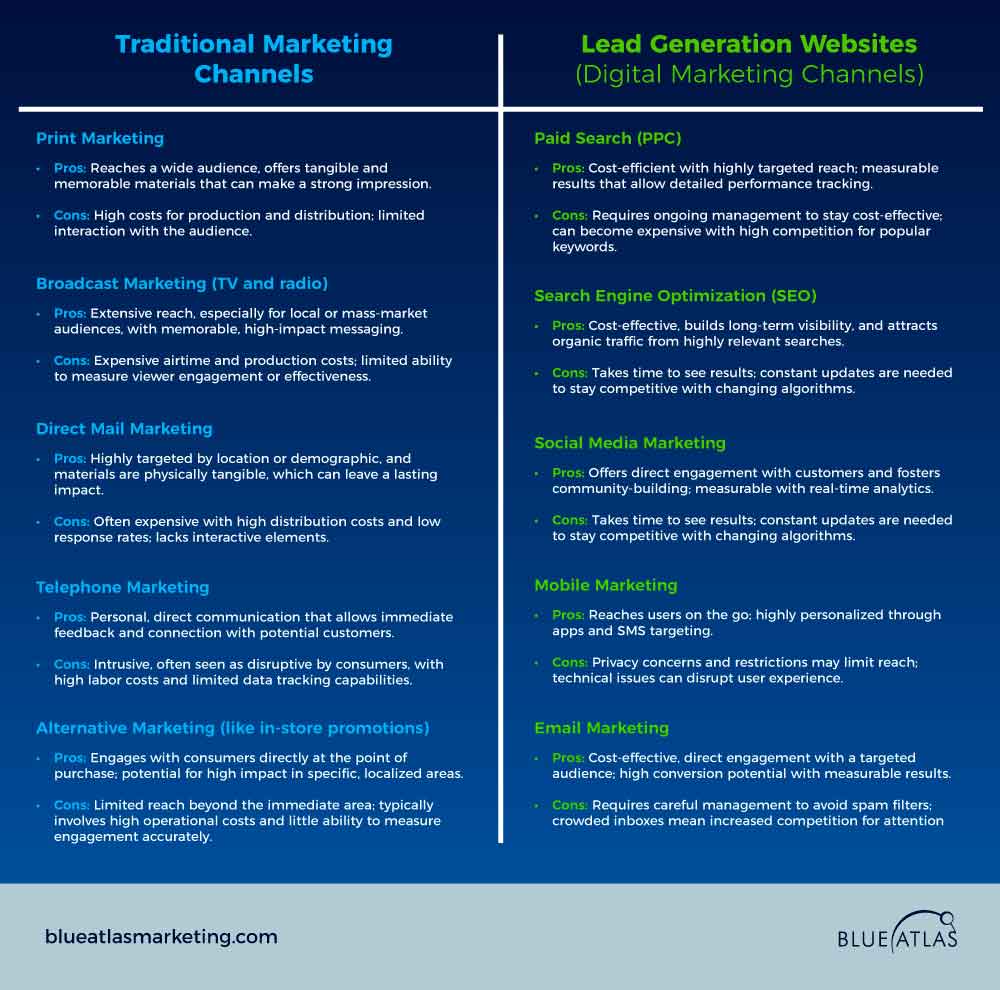
A lead generation website is a specially designed platform with one key mission: to capture and nurture potential customers, or “leads,” for a business.
Unlike a general website, its core purpose is to convert casual visitors into interested prospects by encouraging them to share contact information.
This is often achieved through strategically placed forms, newsletter subscriptions, or downloadable resources like e-books and whitepapers.
Every feature on a lead generation website, from the calls-to-action (CTAs) to landing page layouts, is geared towards guiding visitors into the sales funnel and maintaining engagement throughout their journey.
That said, it is helpful to compare lead generation websites directly to traditional marketing channels to understand their unique value.
Each approach has its strengths and limitations, and understanding these can help businesses decide where to invest their resources.
Traditional Marketing Channels
Print Marketing
- Pros: Reaches a wide audience, offers tangible and memorable materials that can make a strong impression.
- Cons: High costs for production and distribution; limited interaction with the audience.
Broadcast Marketing (TV and radio)
- Pros: Extensive reach, especially for local or mass-market audiences, with memorable, high-impact messaging.
- Cons: Expensive airtime and production costs; limited ability to measure viewer engagement or effectiveness.
Direct Mail Marketing
- Pros: Highly targeted by location or demographic, and materials are physically tangible, which can leave a lasting impact.
- Cons: Often expensive with high distribution costs and low response rates; lacks interactive elements.
Telephone Marketing
- Pros: Personal, direct communication that allows immediate feedback and connection with potential customers.
- Cons: Intrusive, often seen as disruptive by consumers, with high labor costs and limited data tracking capabilities.
Alternative Marketing (like in-store promotions)
- Pros: Engages with consumers directly at the point of purchase; potential for high impact in specific, localized areas.
- Cons: Limited reach beyond the immediate area typically involves high operational costs and little ability to measure engagement accurately.
Lead Generation Websites (Digital Marketing Channels)
- Pros: Cost-efficient with highly targeted reach; measurable results that allow detailed performance tracking.
- Cons: It requires ongoing management to stay cost-effective; it can become expensive with high competition for popular keywords.
Search Engine Optimization (SEO)
- Pros: Cost-effective, builds long-term visibility, and attracts organic traffic from highly relevant searches.
- Cons: It takes time to see results; constant updates are needed to stay competitive with changing algorithms.
- Pros: Offers direct customer engagement and fosters community-building; measurable with real-time analytics.
- Cons: Crowded space with high competition; requires frequent updates and creative content to keep users engaged.
- Pros: Reaches users on the go; highly personalized through apps and SMS targeting.
- Cons: Privacy concerns and restrictions may limit reach; technical issues can disrupt user experience.
- Pros: Cost-effective, direct engagement with a targeted audience; high conversion potential with measurable results.
- Cons: Requires careful management to avoid spam filters; crowded inboxes mean increased competition for attention.
Frequently Asked Questions (FAQs)
What types of lead generation tools are essential for success?
CRM systems, email marketing platforms, and analytics software are vital for tracking leads in real time, capturing contact info, and nurturing sales opportunities through the lead generation process.
How much does a B2B lead generation website cost?
Costs vary depending on customization, design, and features, typically ranging from a few thousand to tens of thousands of dollars, based on the scale of sales opportunities and specific business needs.
How can lead generation companies tailor services for specific needs?
Lead generation companies tailor strategies by analyzing industry requirements, target audience, and business objectives, ensuring an optimized collection of email addresses and other contact info for personalized outreach.
What KPIs should businesses track?
Track conversion rates, lead quality, and ROI to measure the effectiveness of the lead generation process and assess how well it drives sales opportunities.
Why choose a lead generation website over traditional marketing?
Lead generation websites are more cost-effective, measurable, and allow for direct engagement, capturing real-time contact info and generating valuable sales opportunities that traditional marketing can’t match.
A well-designed B2B lead generation website does more than establish an online presence; it drives growth by capturing high-quality leads and converting them into valuable prospects.
Your site becomes a key asset in fueling your sales funnel by effectively gathering contact details from visitors and identifying those who are a good fit.
With the support of skilled lead generation agencies, your business can leverage strategies that make your site a lead capture powerhouse, standing out in today’s competitive market and consistently nurturing prospects toward meaningful conversions.
Why Blue Atlas Marketing?
Ready to elevate your business with proven lead-generation strategies? Blue Atlas specializes in designing high-performance websites that look great and convert.
Whether it’s optimizing for conversions, integrating quality metrics, or enhancing your contact lists, every step is crucial. Let our marketing team help you build a sales-ready platform that drives growth.
Contact Blue Atlas Marketing today and start your transformation!

